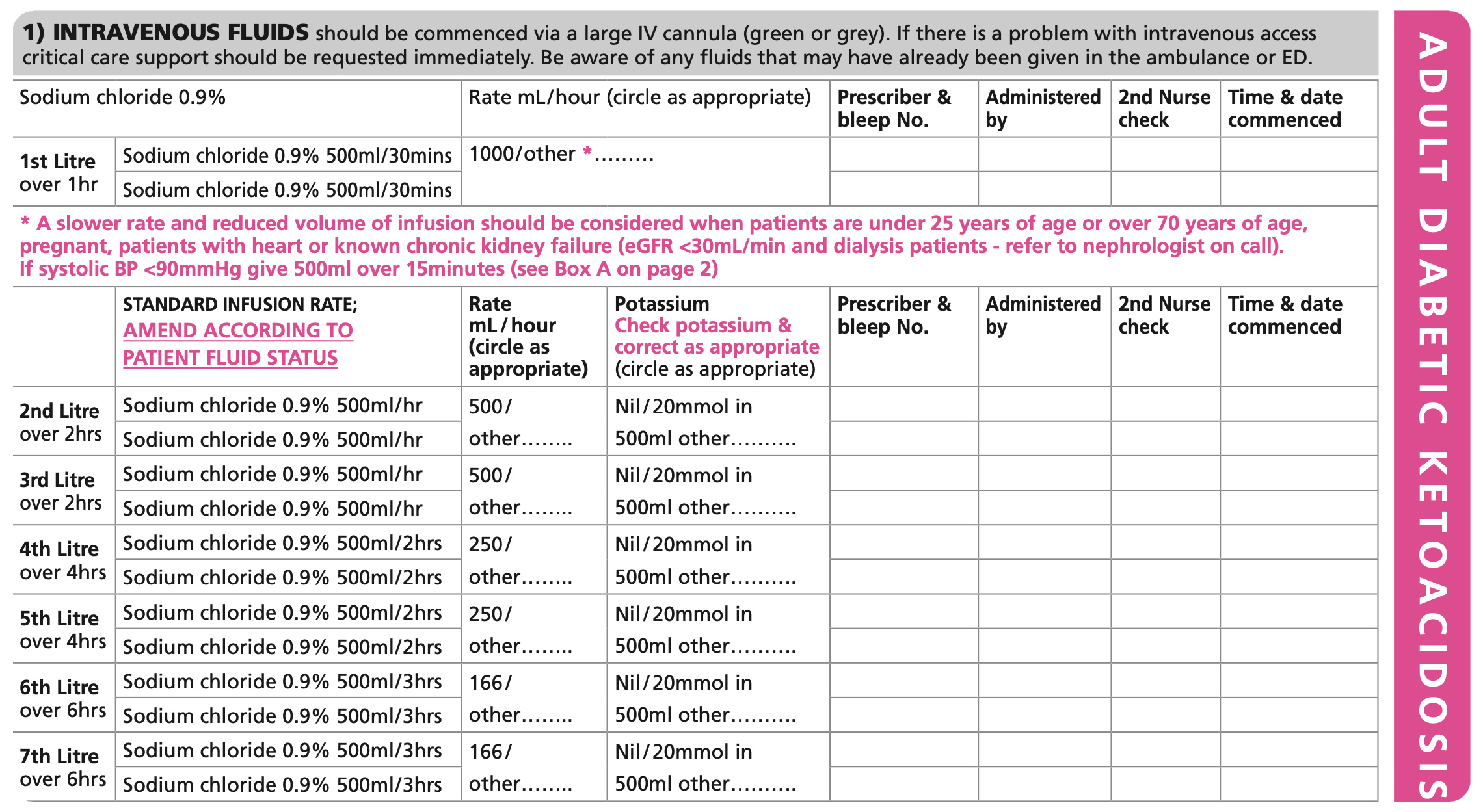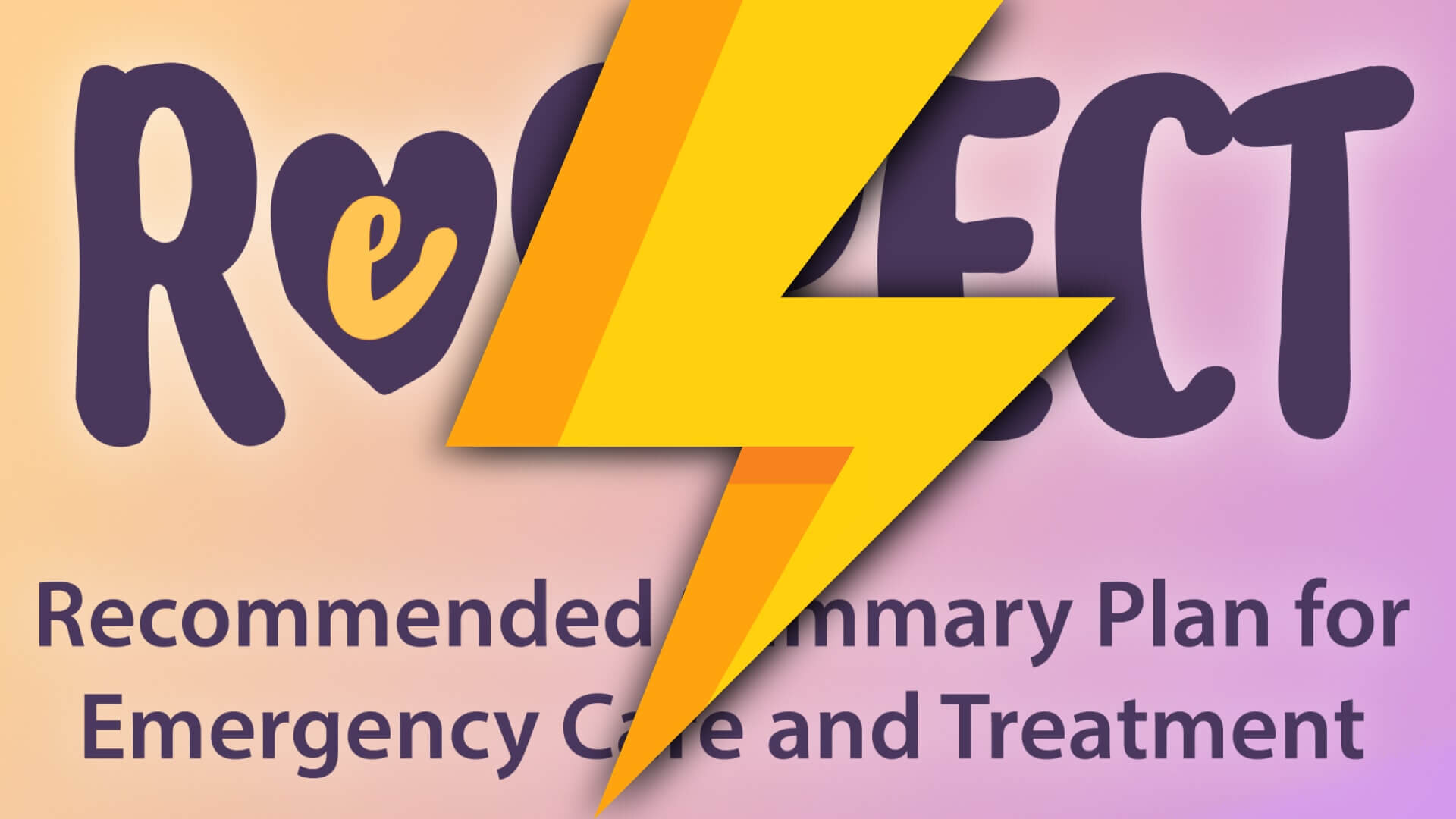Lightning Learning: DKA in Adults
STOP!
Diabetic ketoacidosis (DKA) is a medical emergency with a significant morbidity and mortality. It should be diagnosed and managed promptly.
How common is DKA?1
Nearly 4% of people with type 1 diabetes experience DKA each year, about 8% of episodes occur in inpatients who didn’t primarily present with DKA.
Diagnostic criteria3 (all 3 must be present)
- Ketonaemia ≥3.0 mmol/L or 2+ ketonuria
- Blood glucose >11.0 mmol/L or known diabetes mellitus
- Bicarbonate <15.0 mmol/L and/or venous pH <7.3
Causes of death associated with DKA?
- Cerebral oedema
- Hypokalaemia, hypoglycaemia
- Adult Respiratory Distress Syndrome (ARDS)
- Infections/sepsis
- DKA is prothrombotic (e.g. PE/MI)
DKA IS FATAL IF NOT TREATED!
LOOK
Aims3
- Replacement of fluid deficit
- Insulin treatment
- Monitoring and maintaining electrolyte, potassium balance
- Avoiding complications of treatment
Management
- Treat the patient in ER with full monitoring
- Rapid ABCDE assessment
- IV access, bloods (e.g. VBG, blood ketones, FBC, U&E, LFT, CRP, coagulation profile, consider blood cultures) & ECG
- Start DKA care pathway
- Look for precipitating cause (e.g. infection)
- Input/output monitoring
DKA Treatment Pathway2 (0-60 minutes)
- Commence IV 0.9% sodium chloride
- Fixed rate insulin infusion (FRII) at 0.1 units/kg/h
- Give IM/SC actrapid 10 units if delay in diagnosis/commencing FRII.
- Potassium replacement if needed (see DKA chart below)
- Hourly BM, ketones, VBG
- Review IV fluids accordingly
- Give long-acting insulin
- Patients with DKA will be admitted to the Acute Care Bay (ACB) or ITU depending on severity

LEARN
DON'T FORGET! Patient education is the best prevention ➔ www.dafne.uk.com
References:
- Diabetic Ketoacidosis (Patient.info)
- DKA guideline prescription chart (UHL)
- Guidelines for the management of DKA in adults (UHL)
- Diabetic Ketoacidosis in Adults (BMJ)








